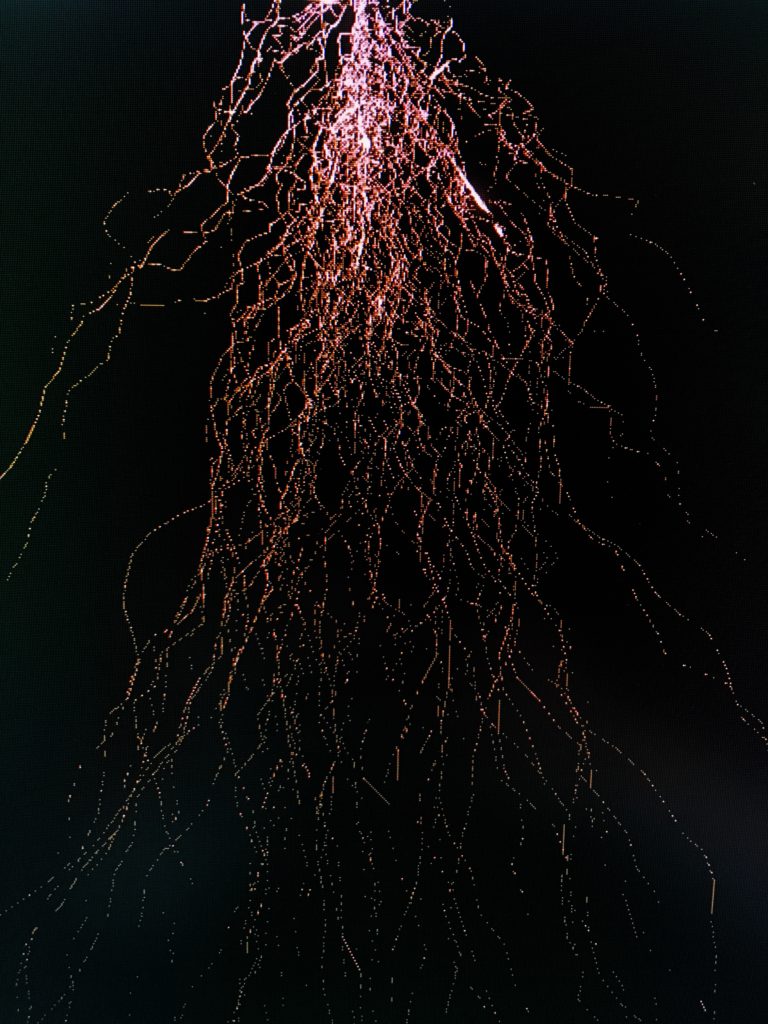Exploring Evolution
My senior year research in the biology department was on a rather specific topic in evolutionary biology: I was using immunostaining and genomic data to investigate the evolution of vomeronasal function, a smell organ important for detecting prey, predators and mates. Having worked at the natural history museum where I was doing this research since my sophomore year, I was engrossed in contributing to the project of evolutionary biology, but my enthusiasm didn’t translate as well to people outside of the field: so, I decided to make a VR Unity piece explaining the context of my research which would adapt to different levels of biological understanding.

I chose to create a tree of evolution that users could explore in virtual reality. The tree of evolution is a common way of representing the evolutionary process, but the 2D format limits the species and time scale that can be displayed at once. By expanding the tree of evolution to be a 3D digital object in Unity, I would have a third axis upon which to display this information.
I had three goals for this project:
- Convey my own sense of wonder for the vastness of evolution
- Allow my viewers freedom of engagement with scientific concepts in the piece
- Involve myself in the narrative, and be honest about my perspective
An important aspect of biology that is difficult to represent in 2D images is the relationship of scale between different biological elements. Often, the difference in size is such that two interacting elements cannot be represented at the same scale. Cells, for example, are a million times larger than the proteins they are made up of; representing cells and proteins interacting functionally at an accurate scale is difficult when working within a frame.
During the sketching phase, I envisioned an entirely interactive environment which could isolate different clades of animals and provide explanatory pop-ups for different biological investigative methods. With revisions, I focused on three different mechanisms which corresponded to my goals for the project:
- Scaling the user along the branches of the evolutionary tree
- Creating four different narrative guides to the experience
- Being personally present as a voice in the narration
Scaling
Immersive 3D spaces solve this issue by introducing depth. While standing in a 3d space, you can look up at objects that tower over you, and down at objects smaller than your hand. In my project, users were placed on the branches of a tree of evolution. As they moved further down the branches towards specific species, the user would scale down and details about the region of the evolutionary tree would appear. This allowed users to ‘zoom out’ on the tree and see it as an item in front of them, with the broad categories of species labeled on regions of branches. When users ‘zoomed in’ to the tree, they would scale down and the tree would appear as the environment around them, focusing on the end of the evolutionary branch they were on. Joystick control and continuous shifting allowed users to experience the relationship between species from far away and up close, and to test the significance of that scale for themselves.
Narration
Explanations of scientific research rely upon shared prior knowledge with their audiences, and have to be made different for different crowds. Even with clarifications, the technical or research tends to be dry. I wanted to give my audience the opportunity to choose how they engage with the biological concept being represented, so I created four different voices to guide them through the experience. Each one could be increased or decreased in volume at will, such that one, none or all of them could be playing at once.
The different voices had distinct tones and perspectives to bring to the environment:
- Technical narrator: went through the experimental design of the research project, outlining hypothesis, methods, and findings
- Scientific narrator: gave context for the significance of this research within evolutionary biology, underlining the importance of research communities and collaboration
- Artistic narrator: delved into the artistic reasoning behind using the format of the VR piece, and the challenge of representing biological concepts
- Personal narrator: explored my personal reasons for taking on this project, including a desire to create dense, specific and unambiguous forms of communication, and the implications of that desire
Voice
In abstract representations of scientific concepts (documentaries, or sci-fi holograms) guiding narrators tend to be neutral voices, unattached to a body. Rather than remove myself from scientific explanation, I wanted to make clear how my perspective informs my presentation of scientific concepts. To do this I used my own voice with binaural audio as the project’s four narrators. I changed the tone and pace of my voice for each of the narrative styles, acting out the emotions behind the different attitudes of the narrative voices. Because of this, I had to acknowledge my own influence on the project’s appearance and content choices, and allow the audience to form their own judgment of my attitude as a curator.